School of Dentistry,
 The University of Birmingham, St. Chad’s Queensway, Birmingham, B4 6NN
The University of Birmingham, St. Chad’s Queensway, Birmingham, B4 6NN
Senior Lecturer/Honorary Consultant in Restorative Dentistry,
School of Dentistry,  The University of Birmingham, St. Chad’s Queensway, Birmingham, B4 6NN
The University of Birmingham, St. Chad’s Queensway, Birmingham, B4 6NN
Objective: This article reviews the intraoral use of magnets as a retentive aid for overdentures in
restorative dentistry.
Data Sources:
This review considers articles that have been published in the
international literature over the last 5 years.
Study Selection: Both cobalt-samarium and iron-
neodymium-boron magnets are used because of their small compact size. They are enclosed in a
metal casing, but if this is breached then the materials may rapidly corrode on contact with saliva.
Safety testing shows that the static magnetic field does not appear to produce any biological effects
although the alloys themselves may be cytotoxic. In vivo research has shown conflicting results on
their biocompatibility. As a retentive element, magnets have been used for tooth and implant borne
overdentures. However their long term clinical durability is poor.
Conclusions: The desire to use
magnetic retention is related to the simplicity of the clinical and laboratory procedures. However
the long term durability of the magnets remains a problem. Further research is required in the
following areas: their biological compatibility, corrosion resistance and wear of the steel casing.
Such research will hopefully provide a permanent magnet which will be resistant to the adverse
environment of the oral cavity and allow the full potential of overdentures retained with magnets to
be realised.

Figure 1. A cobalt-samarium magnet used in dentistry.
The magnet is enclosed in stainless steel.
Magnets have found application in two dental specialities namely orthodontics 1 and prosthetic dentistry 2. In orthodontics the large attractive and repellent forces of these magnets have been used to correct malocclusions 3. Conventional magnets have been used as retentive devices for removable partial dentures, obturators and maxillofacial prosthesis 4,5. In particular the retentive force and compactness of the rare earth magnets have resulted in their widespread use for overdentures.
It is the purpose of this article to review the intraoral use of magnets as a retentive aid for overdentures.
There are two different types of alloys used for the manufacture of small dental magnets. The first alloy used was cobalt-samarium magnets introduced in the sixties. A second alloy based on iron- neodymium-boron became available in the eighties 6. Both these rare earth magnets have high attractive forces. However, they are brittle materials with a low corrosion resistance 7. To overcome these problems the magnets are encapsulated in stainless steel, titanium or palladium. If wear of this coating occurs then the alloy will come into contact with saliva. The combination of saliva contact and wear has a deleterious effect on the corrosion resistance of the material 7 (Fig 2) and may be increased by the presence of bacteria such as Streptococcus sanguis 8 This corrosion problem is well documented and can significantly affect the useful life span of intra-oral magnets 8,9. This is the single most important area of research into the effectiveness of intraoral magnetic systems.
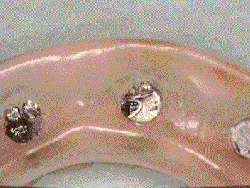
Figure 2. Corrosion of a magnet within a denture.
The safety of the rare-earth magnets has been thoroughly investigated. The effects on biological tissues has shown that static magnetic fields do not appear to result in any changes to the human dental pulp or gingival tissues adjacent to the magnets 10. An in vitro study on osteoblasts failed to show any differences in the cell cultures when exposed to the static fields associated with these magnets 11. Furthermore the fields do not produce any effect on blood flow 12.
The magnets themselves have a cytotoxic effect in vitro which is related to the uncoated cobalt- samarium. The uncoated neodymium-iron-boron magnet has a small cytotoxic effect on cells 13. A model system of mouse and human fibroblasts showed that both alloys are cytotoxic and this is possibly related to corrosion products although the effect of the magnetic fields may not be discounted 14. The human oral mucosal fibroblasts were most sensitive to the effects of these rare earth magnets.
In vivo work has shown conflicting results. Cobalt-samarium magnets were implanted into the mandibles of dogs for a six month time period 15. No pathology was seen on microscopic examination. However, only five animals were used (three magnets and two controls). In a separate study, 30 rats had small orthodontic magnets (Co-Sm) applied to the tibia with the other leg serving as a control 16. Morphometric evaluation showed that areas of resorbtion increased progressively after stimulation with static magnetic fields. This may be a possible inhibitory effect on the osteoblasts.
Magnetic retention offers many advantages as it serves to dissipate lateral functional forces. There is less need for parallel abutments as a rigid line of insertion is not as critical. Futhermore, the technique is simple, involving minimal time at the chairside and in the laboratory. However careful laboratory handling is required so as not to damage the outer metal coating. Magnets have been used as a retentive element for overdentures 17,18. Generally a reversed split pole magnet is used and this is in contact with a ferromagnetic keeper. The technique consists of constructing the keeper in a similar manner to a gold coping. This is cemented into the root face which is then ready for the magnets (Fig 3).
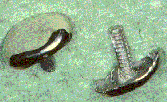
Figure 3 (a) The ferromagnetic keepers.
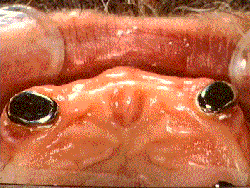
Figure 3 (b) The keepers cemented in place.
The overdenture is placed with holes cut into the denture over the area of the keepers. The magnets are placed into position and then self cured into the denture (Fig 4). This direct pick-up technique allows the easy replacement of worn out magnets. A recent technique describes the use of prefabricated keepers cemented into position with silver-glass ionomer cement 19.
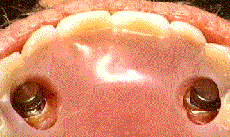
Figure 4 (a) The magnets are placed in position.
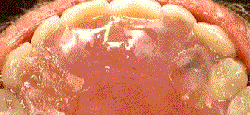
Figure 4 (b) The self cure resin is used to cement the magnets in place.
Another important usage is as a retentive element for implant retained overdentures 20. The magnetic retention may have different combinations 21 but generally the implant supports a keeper and the split pole magnet is retained in the denture. For magnetic retention two to four implants are placed in the anterior region an area devoid of major anatomical structures. Impressions are taken of the keeper and the magnets are initially tried into the mouth supported by a heat cured baseplate (Fig 5). Once the magnets are placed into position the construction of the denture follows traditional complete denture construction (Fig 6).
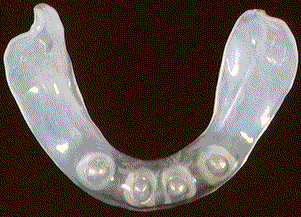
Figure 5 The use of a heat cured baseplate to carry magnets.
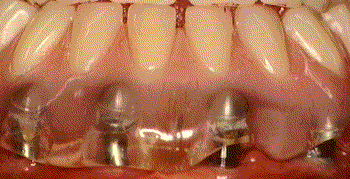
Figure 6 The finished result. The magnets are carried in the lower denture and are supported by four keepers retained by implants in the anterior mandible.
There are few studies on the use of magnets in the clinical environment but those that have been followed over several years have demonstrated the poor durability of magnets. In a five year study22, on twenty one patients with implant retained overdentures, the majority of the magnets required replacement (19 out of 21 patients) due to corrosion followed by loss of magnetism. the remaining two patients did not appreciate the loss of magnetism that had occurred. The success of the implants was unaffected by the problems associated with the magnets. The general use of implant supported overdentures may be associated with clinical complications which include loosening/fracture of abutment screws and/or connecting screws 23. Such data have been collected from studies where the main retainer was either a bar or ball attachment. Studies which have incorporated magnets as the retentive element have been limited and it is difficult to make firm conclusions from the low numbers involved.
The desire to use magnetic retention is related to the simplicity of the clinical and laboratory procedures. However the long term durability of the magnets remains a problem. Further research is required in the following areas: the biological compatibility of the new rare earth magnets, the corrosion resistance and the wear of the steel casing. Such research will hopefully provide a permanent magnet which will be resistant to the adverse environment of the oral cavity and allow the full potential of overdentures retained by magnets to be realised.
2. Laird WRE, Smith GA, Grant AA The use of magnetic forces in prosthetic dentistry. Journal
of Dentistry 1981; 9:328-5
3. Darendeliler MA, Joho JP Magnetic activator device II (MAD II) for correction of Class II,
Division 1 malocclusions. American Journal of Orthodontics & Dentofacial Orthopedics 1993;
103: 223-39
4. Behrman SJ. The implantation of magnets into the jaw to aid denture retention. Journal of
Prosthetic Dentistry 1960; 10:807-41
5. Javid N The use of magnets in a maxillofacial prosthesis. Journal of Prosthetic Dentistry
1971; 25:334-41.
6. Chen GY. New magnetic alloys. Science 1980; 208:888-94.
7. Angelini E, Pezzoli M, Zucchi F. Corrosion under static and dynamic conditions of alloys used
for magnetic retention in dentistry. Journal of Prosthetic Dentistry 1991; 65: 848-53.
8. Wilson M, Kpendema H, Noar JH, Hunt N, Mordan N J. Corrosion of intraoral magnets in the
presence and absence of biofilms of Streptococcus-Sanguis. Biomaterials 1995; 16: 721-5.
9. Drago CJ. Tarnish and corrosion with the use of intraoral magnets. Journal of Prosthetic
Dentistry 1991; 66:536-40.
10. Bondemark L, Kurol J, Larsson A. Human dental pulp and gingival tissue after static magnetic
field exposure. European Journal of Orthodontics 1995; 17:85-91.
11. Papadopulos MA, Horler I, Gerber H, Rahn B A, Rakosi T. Einfluss statischer magnetischer
Felder auf die Aktivitat von Osteoblasten: eine in vitro Untersuchung. Fortschr Kieferorthop
1992; 53:218-2.
12. Saygili G, Aydinlik E, Ercan M T, Naldoken S, Ulutuncel N. Investigation of the effect of
magnetic retention systems used in prostheses on buccal mucosal blood flow. International
Journal of Prosthodontics 1992; 5:326.
13. Bondemark L, Kurol J, Wennberg A. Orthodontic rare earth magnets - In vitro assessment of
cytotoxicity. British Journal of Orthodontics 1994; 21:335-41.
14. Donohue VE, McDonald F, Evans R. In vitro toxicity testing of neodymium-iron-boron
magnets. Journal of Applied Biomaterials 1995; 6:69-74.
15. Altay OT, Kutkam O, Tanyeri S. The biological effects of implanted magnetic fields on the bone
tissue of dogs. International Journal of Oral and Maxiollofacial Implants 1991; 6:345-9.
16. Linder-Aronson S, Linskog S. A morphometric study of bone surfaces and skin reactions after
stimulation with static magnetic fields in rats. American Journal of Orthodontics & Dentofacial
Orthopedics 1991; 99:44-8.
17. Gillings BRD. Magnetic retention for complete and partial overdentures. Part I. Journal of
Prosthetic Dentistry 1981; 45:484-91.
18. Gillings BRD. Magnetic retention for overdentures. Part II. Journal of Prosthetic Dentistry
1983; 49:607-18.
19. Wang NH, von der Lehr WN. The direct and indirect techniques of making magnetically
retained overdentures. Journal of Prosthetic Dentistry 1991; 65:112-7.
20. Walmsley AD, Brady CL, Smith PL, Frame JW. Magnet retained overdentures using the Astra
dental implant system. British Dental Journal 1993; 174:399-404.
21. Jackson TR. The application of rare earth magnetic retention to osseointegrated implants.
International Journal of Oral Maxillofacial Implants 1986; 1:81-92.
22. Walmsley AD, Frame JW. Implant retained overdentures with magnetic retention: A five year
study. Journal of Dentistry (Accepted and In Press)
23. Hemmings KW, Schmitt A and Zarb GA. Complications and maintenance requirements for
fixed prosthesis and overdentures in the edentulous mandible: a 5-year report. International
Journal of Oral Maxillofacial Implants 1994; 9:191-195.
References
1. Bondemark L, Kurol J, Wennberg A. Biocompatibility of new, clinically used, and recycled
orthodontic samarium-cobalt magnets. American Journal of Orthodontics & Dentofacial
Orthopedics 1994; 105:568-74The Author
 Dr Walmsley graduated in 1981 from the Victoria University of Manchester. After house officer
positions at both Guys and St.Bartholomew’s Hospitals, he took a MRC research studentship. His
PhD on the “Biological effects of dental ultrasound” was awarded in 1985. He joined the staff at the
University of Birmingham, becoming Senior Lecturer in 1991 and honorary consultant in Restorative
Dentistry in 1993. His research interests include the use of ultrasound in dentistry, implant retained
overdentures and the use of computer aided learning to simulate dental case histories.
Dr Walmsley graduated in 1981 from the Victoria University of Manchester. After house officer
positions at both Guys and St.Bartholomew’s Hospitals, he took a MRC research studentship. His
PhD on the “Biological effects of dental ultrasound” was awarded in 1985. He joined the staff at the
University of Birmingham, becoming Senior Lecturer in 1991 and honorary consultant in Restorative
Dentistry in 1993. His research interests include the use of ultrasound in dentistry, implant retained
overdentures and the use of computer aided learning to simulate dental case histories.